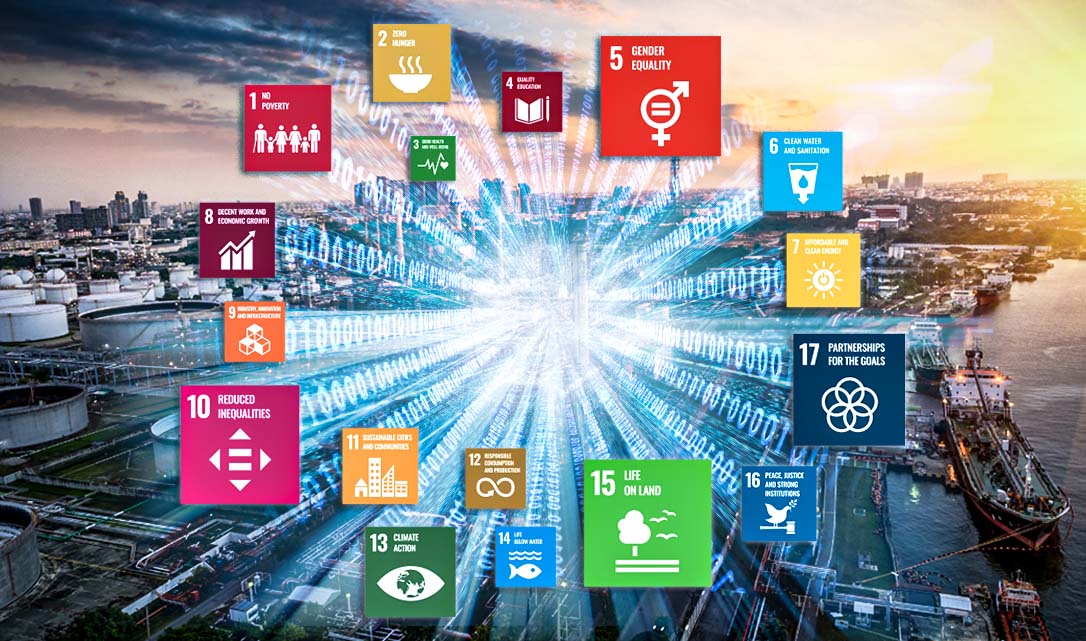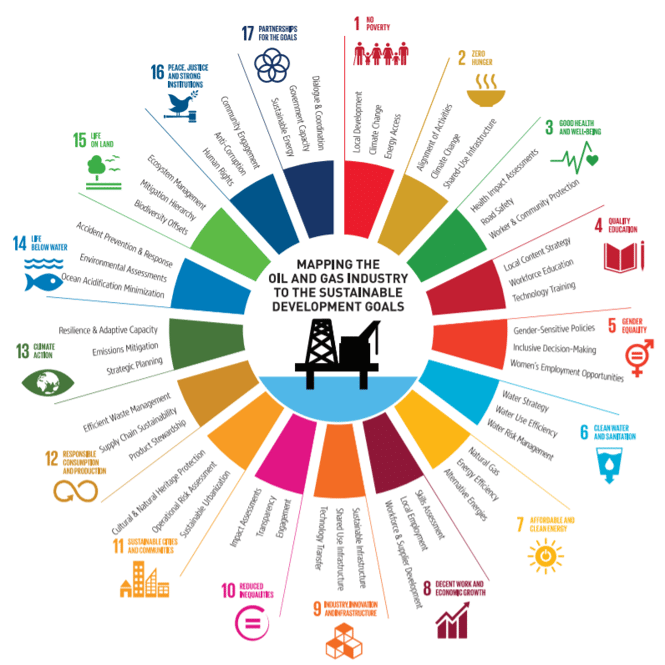Digital Completions in Plant Modifications and Upgrades
Unlike greenfield or any new build construction projects, plant modifications and upgrades present a unique set of challenges. Work is carried out...
4 min read
 Lisa De Vellis, PE
:
Dec 10, 2021 12:30:58 PM
Lisa De Vellis, PE
:
Dec 10, 2021 12:30:58 PM

“Adapt or die,” warns the UK Environment Agency (EA) in response to the urgency with which governments, societies and businesses – all stakeholders, really – must approach climate change.
In the aftermath of the global United Nations (UN) Climate Change Conference (COP26), it’s worth discussing that the UN Sustainable Development Goals (SDGs) provide a framework for how Oil & Gas can not only adapt so as not to die, but to actively contribute to the betterment of humanity – both of people and of the planet.
In that very spirit, a new public-private consortium called The Global Energy Alliance for People and Planet launched at the COP26, keeping the global foot firmly on the accelerator towards decarbonization.
This consortium aims to unlock 100 billion USD in both public and private financing to:
The implications for Oil & Gas businesses are clear – to paraphrase the UK EA: evolve or face extinction.
Oil & Gas still constitutes nearly sixty percent of global fuel consumption and is expected to remain the leading global energy source into the end of the projection period of 2035.
Natural gas supply, increasing at a higher rate than either oil or coal, will overtake coal as the second-most significant fuel source by 2035. Renewables are also fast-growing, expected to achieve ten percent of primary global energy supply by 2035.
To satisfy global energy demand, upstream Oil & Gas will likely invest up to 700 billion USD per year until 2040, with the overwhelming majority in non-petroleum exporting countries. Including investments downstream – in refining and transport – this figure shoots up to nearly 23 trillion USD.
It seems a paradox: the world needs Oil & Gas, yet Oil & Gas businesses face increasing pressures in order to compete and remain viable. The longevity of the sector is at risk, but those embracing the energy transformation are poised to craft a more sustainable future.
The SDGs offer a high-level framework through which to do just that. Digitalization offers practical business and operational tools through which these frameworks can be metabolized into reality, transforming forward-thinking Oil & Gas businesses towards a truly sustainable future.
In 2015, the United Nations General Assembly laid-out seventeen global goals – the SDGs – as part of a universal 2030 agenda striving to tackle some of the world’s most fundamental economic, social and environmental problems.
While (in theory anyway) governments frame their national agendas around Agenda 2030 in order to fulfill their reporting and target commitments, it is the private sector that helps drive achievement of many of these goals.
This is particularly the case with regards to the broader energy sector and, particularly, with regards to Oil & Gas as the industry has direct or indirect impacts on every one of the seventeen SDGs. It’s a sector poised to make a difference in the global landscape through exciting and productive contributions to the SDGs.
While hydrocarbon industries may be an easy target for sustainability activists, it’s important to note that Oil & Gas holds significant potential to contribute positively to the SDGs from a myriad of social, environmental and economic vantage points.
The below image maps out at a high-level how Oil & Gas can contribute to each of the seventeen SDGs.

There is a synergy between the latter two points in particular. For example, investing in digitalization tools serve to modernize the industry, reducing carbon emissions and increasing health and safety to the benefit of sector employees and the environment at large.
Overall, and despite a different popularized narrative, Oil & Gas holds the potential to foster both social and economic development through creating jobs and increasing energy access for under-developed communities.
Further, through the advancement and uptake of advanced technologies, like digitalization, Oil & Gas can champion a paperless future, reduce carbon footprint and keep workers safe.
To understand digitalization nodes holding the greatest potential in terms of SDG impact, it’s useful reflect on to the Oil & Gas value and supply chain, as demonstrated in the below figure.

Certainly, digitalization solutions exist for all parts of the value and supply chain. However, as an entire SDG is dedicated to Climate Action (SDG 13), it makes most sense to look at the production and processing stages.
As those are the value-chain stages typically regarded as the most antithetical to sustainability, it is precisely where digital solutions are poised to best address climate action though tackling resilience and adaptive capacity, emissions mitigation and strategic planning.
Specialized digital software solutions in Oil & Gas help with the following:
Those on the outside may perceive Oil & Gas to be the antithesis of sustainability solely on the basis that it is a hydrocarbon industry. When considered holistically, sustainability – as the SDGs demonstrate – can be at the heart of every business decision, of every process and every operation, regardless of sector.
Oil & Gas holds a wealth of potential towards making truly sustainable contributions that honor economic, environmental, and human-welfare principles. Digitalization is a sustainable solution. It eliminates the need for paper. It keeps people safe. It reduces carbon emissions. And so much more…
Contributing to the SDGs isn’t some ephemeral abstract concept. Contributing to the SDGs literally changes the world. Oil & Gas businesses who are visionary enough to embrace these contributions via digitalization will not only survive, but they will thrive, reaping social capital benefits that make for a truly sustainable business.
Make your business sustainable with MODS, talk with our  and find the best suitable solution for your situation.
and find the best suitable solution for your situation.
Want to know more about digital transformation? Go check out our Digital transformation - everything you need to know.

Unlike greenfield or any new build construction projects, plant modifications and upgrades present a unique set of challenges. Work is carried out...

Turnarounds and shutdowns are among the most critical—and stressful—phases in the management and operation of industrial assets. These planned...

Offshore decommissioning and asset retirement present significant logistical, regulatory, safety, fiscal and reputational challenges. The process of...

When people think of digitalization, there may be fear – whether legitimate or not – of computers taking jobs away from humans. As a child of the...

It is all about the input - yes, it is as simple as that. Without sufficient and appropriate data, no matter what plans you have regarding the...

This blog is the continuation of Data-driven smart facilities and decarbonization towards a sustainable energy future.